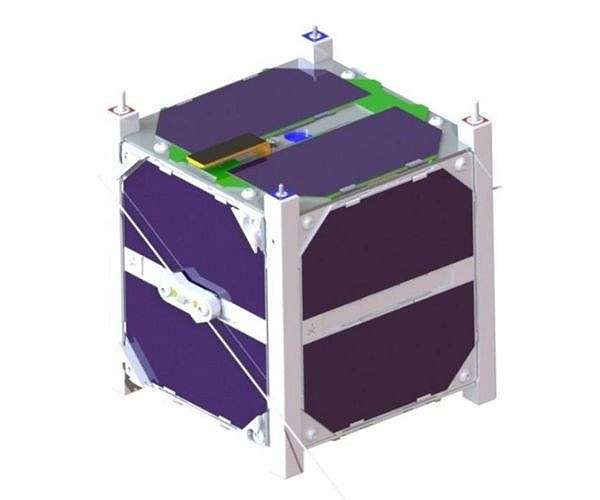
LIST launches nanosatellite to demonstrate energy harvesting in space
by Robert Schreiber
Berlin, Germany (SPX) Jun 18, 2024
The Luxembourg Institute of Science and Technology (LIST) has launched its CubeSat project, LIST-SAT-01, marking the first Luxembourgish nanosatellite initiative with an in-house scientific experiment. This project aims to test and advance technologies developed at LIST, increasing their Technology Readiness Level (TRL) and achieving flight heritage for on-board technologies.
At the core of the CubeSat project is a nanosatellite weighing 1.2 kilograms, featuring a thermal energy harvester with pyroelectric materials developed by LIST. This technology recently received the European Research Council (ERC) Advanced Grant.
“The scientific goals of the CubeSat project revolve around demonstrating the technology of an energy harvesting system,” said Olivier Bouton, project manager. “The satellite will harvest energy from temperature cycles induced by its orbit.” As the satellite orbits Earth, its orientation will vary, causing temperature fluctuations that will be used to harvest energy.
The CubeSat will include three technologies developed by LIST:
– Pyroelectric Energy Harvester: Produces electrical power from heat modulation in space.
– Super Black Coating: Absorbs and emits thermal radiation efficiently.
– Inkjet Printed Sensors: Thermal gauges to monitor the payload experiment in space.
The project aims to demonstrate the system’s performance of these three technologies operating together. The black body absorbs solar radiation efficiently, heating up during sun exposure and emitting heat during eclipses, enhancing overall energy capture. This system aims to complement traditional photovoltaic panels and mitigate sensitivity to radiation-induced degradation and ballistic impacts of orbiting debris.
Research Collaboration
The CubeSat project is a collaboration among four partners, with LIST as the coordinator and CSUM (University Space Center Montpellier, France) as the main contributor. The project also involves radio amateur clubs F8KGY ARRT (Thionville, France) and ADRAD Kayldall LX9AK (Rumelange, Luxembourg) for radiocommunication between the CubeSat and the ground station.
CSUM has expertise in designing, developing, testing, and operating nanosatellites. The satellite will be based on their existing space-qualified platform.
The CubeSat launch is scheduled for January 2026, with the project initiated in September 2023. The timeline includes system definition and specification in 2023-2024, production and debugging in 2024-2025, qualification tests in late 2025, and operation in space after the early 2026 launch, lasting at least one year.
“This project brings together complementary expertise and skills of different teams within the department of Materials (MRT) of LIST,” said Jerome Polesel, Technology and Innovation Manager at LIST. “It is the first time that such energy harvesting technology will be implemented in a satellite, aiming to synergize our different know-hows.
This flagship project is truly a big source of motivation for our technical staff.” The CubeSat project also aims to create opportunities for further development of payload technology and pave the way for future demonstration missions of other LIST technologies. “As one of the first scientific Luxembourgish nanosatellites, the initiative aligns perfectly with the materials department’s strategic initiative’s ‘Flagship demos’ objective, which focuses on highly ambitious real-scale demonstrations of advanced end-products,” added Jerome Polesel.
Related Links
Luxembourg Institute of Science and Technology
Space Technology News – Applications and Research
- SEO Powered Content & PR Distribution. Get Amplified Today.
- PlatoData.Network Vertical Generative Ai. Empower Yourself. Access Here.
- PlatoAiStream. Web3 Intelligence. Knowledge Amplified. Access Here.
- PlatoESG. Carbon, CleanTech, Energy, Environment, Solar, Waste Management. Access Here.
- PlatoHealth. Biotech and Clinical Trials Intelligence. Access Here.
- Source: https://www.spacedaily.com/reports/LIST_launches_nanosatellite_to_demonstrate_energy_harvesting_in_space_999.html



